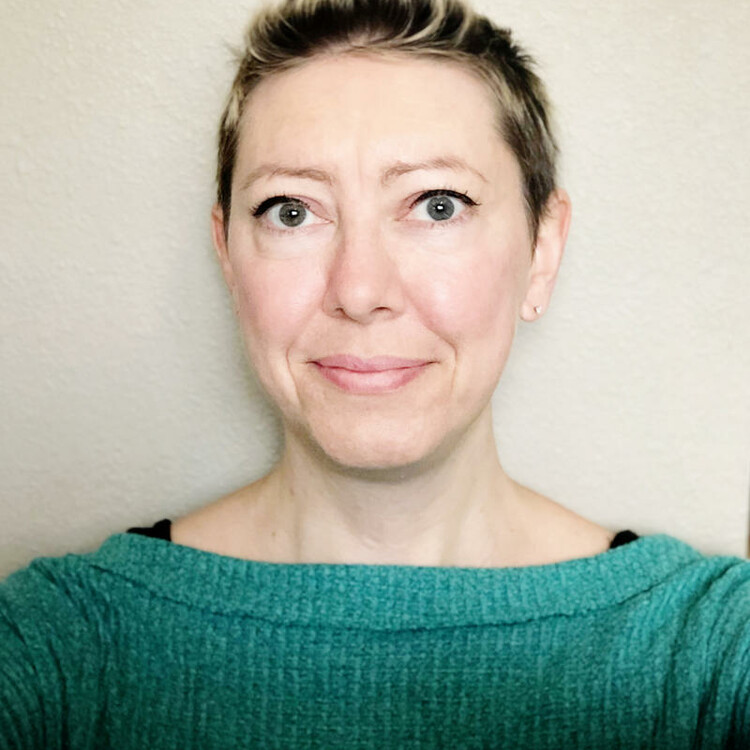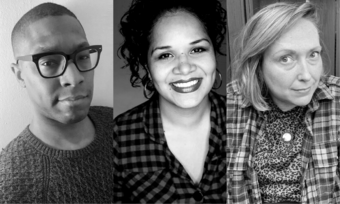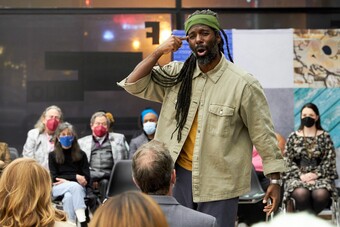Increasing Playwright Engagement Through Peer Review—Part Two
A three-part blog series exploring the “Why” behind one playwright project’s choice to utilize peer review for play selection, the “How” to implement it, and “What” the end result has been.
How many playwrights have been told to self-produce? It seems like the go-to response anytime someone expresses frustration with the current system of “Development.” It sounds enticing, and the idea definitely feeds the angsty rebellion residing within… But let’s be honest: very few playwrights have access to the resources necessary to mount a full production of their work.
There’s something about a short play festival, however, that brings resources out of the woodwork.
This is one of the primary reasons I decided to create a female playwrights festival (versus a full-length show)—I knew that the concept would excite my community, it would be a unique event for the theater I wanted to partner with, and it required minimal rehearsal space and time.
In other words, it was the most feasible way I, a playwright, could make something awesome happen in the now.
And although I’m going to focus here primarily on how our peer-review process works, the how of the project’s conception is important too. After all, there might be other angst-ridden playwrights out there interested in making something happen and they shouldn’t feel like action is out of reach!
A short play fest can be put together in a multitude of ways. Ours began with three simple, but vitally important, ingredients:
- Space—I asked the community theater if they’d like to partner on a new play festival during one of the months the theater was dark and they said “Yes.” Never be afraid to ask. Finding space in a bigger city is more difficult, more expensive, and something that we are only just now starting to do. There is something to be said for the awesomeness of producing in smaller communities.
- Artists—I reached out to local directors and actors, and invited them to come play with us. Almost all of the artists I invited to work on this project jumped at the chance. There isn’t a whole lot of opportunity to work on new plays in Prescott, so I wasn’t just asking them to donate their time/energy, I was offering them a cool new opportunity to flex their creative muscles.
- Community—The ONSTAGE Project is not just an opportunity for female playwrights to be heard, it’s an opportunity for us to connect with the community that supports our art. We partner with a local women’s non-profit every year, and donate a portion of the proceeds from our production to their programming. This has been an integral part of the concept from the beginning—what good, after all, is a female playwrights fest that celebrates women without serving them beyond the stage?
Our Peer Review process evolved very simply out of my desire for the festival to belong to the playwrights whose work I was producing. I created a simple evaluation form in Word that asked playwrights to rate plays on a scale of 1-5, scoring plays on originality, characters, dialogue, and interpretation of the Festival Theme, making a total of 20 points possible. I’ve stuck with this very simple basis of evaluation because it has yielded a healthy picture of each script.
Here’s what you need to know about our Peer Review process:
- Submissions: We ask playwrights to submit 10 minute plays or monologues on a set theme, with the understanding that by doing so, they are agreeing to participate in a peer review process. Each playwright knows (as long as they’ve read our submission call/or/read up about the project on our website) that they will be playing a much larger part in the festival’s final outcome than in any other event.
- Evals: I’m sure there are many ways to do this, and in fact, our first year using Peer Review, I created an eval form in Word. This year we used Survey Monkey. Both methods have their merit. Setting up individual Survey Monkeys for each group of plays took much longer on my end than sending the Word doc to each playwright did. But, it saved time on the aggregate side, once the evals were completed. Either way, this stage of organization is time consuming – but worth it!
- Every play was read/evaluated 8-10 times. In previous years, every playwright read every play—this was when I had no more than 20 scripts. Obviously with this year’s submissions exceeding 100, I had to come up with a way to make sure the plays were read enough times to get a fair evaluation, and while 3 may be the magic number in comedy, I’ve found that 3 evaluations is not the best indicator of a play’s awesomeness.
I think this is due in part to the fact that our playwrights are reading from many different perspectives. One playwright expressed skepticism in her peers’ ability to “know what makes a good play.” While I think that skepticism is misplaced (“good” is relative), her concern about the evaluation process is a valid one (because “good” is relative). It’s very easy for the same play to receive one excellent review, one mediocre, and one poor – saddling it with a mid-range score. Raise the number of people evaluating it, however, and the scores start to take on a more realistic shape.
What happens next?
This is when I step in as producer and start reading.
What am I looking for? To maintain integrity in the Peer Review process, I read and evaluate each play using the same evaluation points that the playwrights use, paying special attention to things like tone, subject matter, and page length. Additionally, I pay strict attention to each play’s interpretation of the festival theme.
This year there were about 45 top-scoring plays.
I selected 28 semi-finalists based on their peer review scores first, interpretation of festival theme second, and with an attempt to avoid redundancy third. For example, we received a lot of plays about pregnancy—many of them scored high, but as producer, I knew I couldn’t produce a whole evening of plays on the subject. I also needed to create a balance of comedies and dramas, short pieces and longer.
We’re producing 11 playwrights this year. I’ll talk a little more about the production angle “What’s” and “What happened” after this Sunday’s livestream reading of our Finalists on HowlRound TV.















Comments
The article is just the start of the conversation—we want to know what you think about this subject, too! HowlRound is a space for knowledge-sharing, and we welcome spirited, thoughtful, and on-topic dialogue. Find our full comments policy here